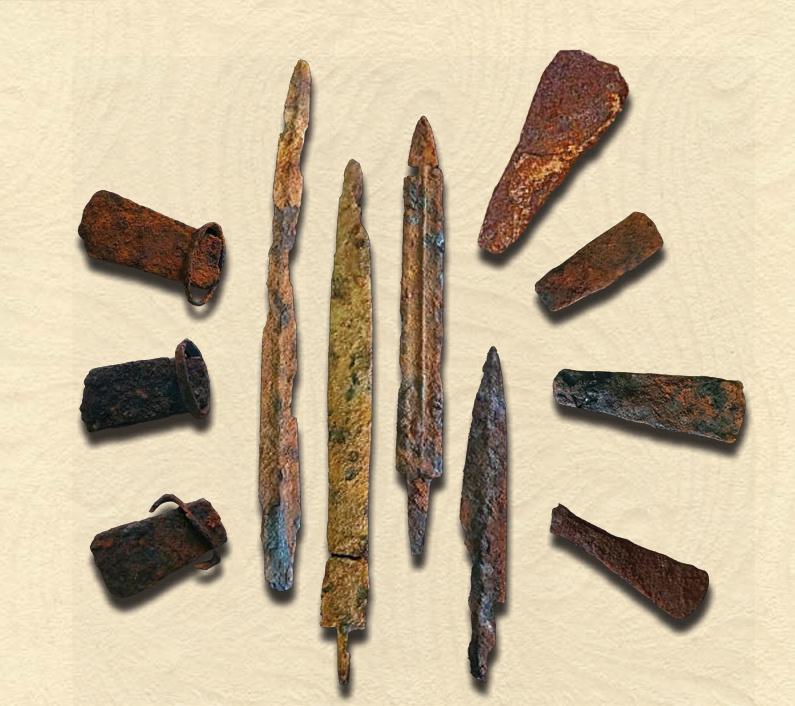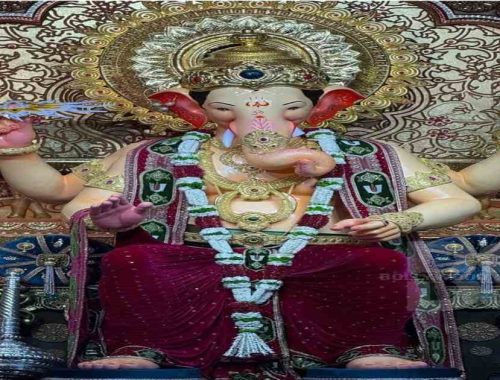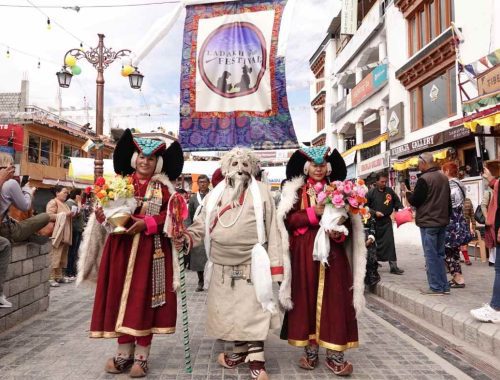
New Discoveries in Tamil Nadu Rewrite India’s Iron Age History: Iron Smelting Found Dating Back to 3345 BCE
Recent archaeological discoveries in Tamil Nadu have significantly reshaped our understanding of India’s Iron Age. New evidence suggests that iron smelting in this region began much earlier than previously believed, positioning Tamil Nadu as a pivotal center for early iron technology. In this article, we will explore recent discoveries in Tamil Nadu that challenge traditional views on the Iron Age in India. We’ll cover its origins, new findings, key archaeological sites, and their impact on history, and answer common questions about this era. Keep reading!
What is the Iron Age?
The Iron Age marks the final stage of the three-period system used to classify prehistoric societies, following the Stone and Bronze Ages. It is characterized by the widespread use of iron for tools and weapons, replacing earlier materials like bronze. The onset of the Iron Age varied across regions, beginning around 1200 BCE in the Middle East and southeastern Europe and later in other parts of the world.
Traditional Understanding of the Iron Age in India
Historically, it was believed that the Iron Age in India began around 1500 BCE, primarily in the northern Gangetic plains. This period was marked by the emergence of iron tools and weapons, which played a crucial role in advancing agriculture, warfare, and various crafts.
New Discoveries in Tamil Nadu
Recent studies have challenged this traditional timeline. A report titled “Antiquity of Iron: Recent Radiometric Dates from Tamil Nadu,” released on January 23, 2025, by Tamil Nadu’s Chief Minister M.K. Stalin, presents compelling evidence that iron smelting in the region began as early as 3345 BCE. This predates previous estimates by over a millennium and suggests that Tamil Nadu was a significant center for early iron technology.
With immense pride and unmatched satisfaction, I have declared to the world:
— M.K.Stalin (@mkstalin) January 23, 2025
“The Iron Age began on Tamil soil!”
Based on results from world-renowned institutions, the use of iron in Tamil Nadu dates back to the beginning of 4th millennium B.C.E., establishing that iron usage… pic.twitter.com/YYslKX7K5F
Key Archaeological Sites in Tamil Nadu
- Sivakalai: Located in the Thoothukudi district, excavations at Sivakalai have unearthed burial urns containing organic materials. Radiocarbon dating of these materials indicates that iron smelting activities occurred here over 5,300 years ago, around 3345 BCE.
- Adichanallur: Also situated in the Thoothukudi district, Adichanallur has long been recognized for its archaeological significance. Recent studies have provided dates around 2500 BCE for iron artifacts discovered at this site, further supporting the early use of iron in Tamil Nadu.
Also Read: Exploring Indus Valley Civilization: History, Discoveries, and Scholarly Debates
Implications of the Discoveries
These findings suggest that Tamil Nadu was a significant center for early iron technology, contemporaneous with ancient civilizations like the Indus Valley. The advanced iron-smelting techniques developed in this region played an important role in shaping its cultural and technological landscape. Additionally, over 90% of the ancient graffiti marks found across 140 archaeological sites in Tamil Nadu share similarities with those of the Indus Valley Civilization, indicating possible cultural exchanges or shared practices.
மண்ணில் தி.மு.க உள்ளவரை எவராலும் தமிழர் வரலாற்றையும் பண்பாட்டையும் எந்நாளும் அழைத்திட முடியாது 🏴🚩💯🔥 #TheNewIronAge pic.twitter.com/rREriOXEy9
— sanjay (@sanjay56_0891) January 24, 2025
Takeaway
The recent archaeological discoveries in Tamil Nadu have profound implications for our understanding of early human technological progress. They not only challenge established timelines but also highlight the region’s significant contributions to early iron technology. As research continues, Tamil Nadu’s role in the ancient world becomes increasingly evident, underscoring its importance in the broader narrative of human history.
Frequently Asked Questions (FAQs)
1. What is the Iron Age?
The Iron Age is a period in human history that followed the Bronze Age, characterized by the widespread use of iron for tools & weapons. This era saw significant advancements in agriculture, warfare, and craftsmanship due to the superior properties of iron compared to earlier materials.
2. When did the Iron Age begin in India?
Traditionally, it was believed that the Iron Age in India began around 1500 BCE in the northern Gangetic plains. However, recent discoveries in Tamil Nadu suggest that iron smelting may have started as early as 3345 BCE in the southern region.
3. What are the key archaeological sites in Tamil Nadu related to the Iron Age?
Significant sites include:
- Sivakalai: Located in the Thoothukudi district, where burial urns containing evidence of early iron smelting have been found.
- Adichanallur: Also in the Thoothukudi district, known for its rich archaeological findings, including iron artifacts dated to around 2500 BCE.
4. How do these discoveries change our understanding of ancient Indian history?
These findings suggest that advanced iron-smelting techniques were present in southern India much earlier than previously believed. This challenges the traditional north-centric view of technological development in ancient India and highlights Tamil Nadu as a significant center for early iron technology.
5. What is the significance of the graffiti marks found in Tamil Nadu?
Over 90% of the ancient graffiti marks found across 140 archaeological sites in Tamil Nadu share similarities with those of the Indus Valley Civilization. This indicates possible cultural exchanges or shared practices between these ancient civilizations.
6. How were the dates of these iron artifacts determined?
The dates were established using radiometric dating techniques, including Accelerator Mass Spectrometry (AMS) and Optically Stimulated Luminescence (OSL) analyses, on organic materials found alongside iron artifacts.
7. What is the global significance of these findings?
Globally, the Iron Age has been attributed to the Hittite Empire around 1300 BCE. However, Tamil Nadu’s findings challenge this timeline, suggesting that iron smelting was practiced much earlier in this region, thereby redefining the global history of metallurgy.
8. How did the Iron Age differ from the Bronze Age?
The primary distinction between the Iron Age and the Bronze Age lies in the materials used for tools and weapons. During the Bronze Age, bronze—a mixture of copper and tin—was predominantly used. In contrast, the Iron Age saw the emergence of iron and steel as the primary materials, offering advantages such as greater abundance and superior strength.
9. What technological advancements occurred during the Iron Age?
The Iron Age introduced significant technological innovations, including the development of iron smelting techniques, the creation of more durable agricultural tools, and the production of stronger weapons. These advancements led to improved farming practices, population growth, and the expansion of territories.
10. How did the Iron Age impact societal structures?
The Iron Age brought about changes in societal organization. The availability of iron tools enhanced agricultural productivity, leading to surplus food and population growth. This, in turn, contributed to the development of more complex social hierarchies, trade networks, and the establishment of fortified settlements.
11. Were there any cultural developments during the Iron Age?
Yes, the Iron Age witnessed significant cultural developments, including advancements in art, language, and religious practices. For instance, in Europe, the Celts produced intricate metalwork and developed unique artistic styles. Additionally, the period saw the emergence of early written scripts in various regions.
12. How did the transition from the Bronze Age to the Iron Age occur?
The transition from the Bronze Age to the Iron Age was gradual and varied across regions. It involved the discovery and refinement of iron smelting techniques, which allowed societies to produce iron tools and weapons more efficiently. This transition was influenced by factors such as resource availability, trade interactions, and technological diffusion.
(Featured Image taken from Department OF Archaeology, Government OF Tamil Nadu)
Khushi Jha
I am Khushi Jha, a proud alumna of Delhi University with a degree in History and Political Science. My fascination with the events that have shaped our world drives me every day. Currently, I am pursuing my Master’s in History, diving even deeper into global dynamics and the incredible heritage of India. I firmly believe that India's rich heritage deserves wider recognition. I strive to bring its stories to the forefront, ensuring they are celebrated and acknowledged on a global stage. I have written extensively across various niches, including fashion, health, lifestyle, real estate, hospitality, amongst others. In my free time, you’ll find me immersed in books, both fiction and non-fiction, or simply enjoying some much-needed rest.
You May Also Like

The Ganesha Idol That Costs More Than Various Treasures Combined: Inside Mumbai’s Most Expensive Pandal
August 26, 2025
Ladakh Festival 2025: Celebrate Culture, Heritage, and Unity from September 21–24
September 13, 2025


